Chapter 1: THE FIRST A.I.F.
AUSTRALIAN IMPERIAL FORCES
AUSTRALIAN AND NEW ZEALAND ARMY CORPS A.N.Z.A.C.

Both Captain V. E. Smythe and Lieutenant E. V. Smythe (later Capt. and then T/Major) were awarded Bars to their Military Crosses (M.C.) as well as each receiving a Mention In Despatches (M.I.D.) during their service. Lieut. P. E. Smythe (Corporal at the time the above picture was taken) was awarded a M.C. (See details below). The soldier in the centre of the picture, Sgt. R. G. McPhee (later Lieut.), who was E. V. Smythe's brother-in-law, received a Crois de Guerre or the French War Cross. Cpl. H. A. Smythe was killed on 3 May 1917 in the 2nd Battle of Bullecourt.
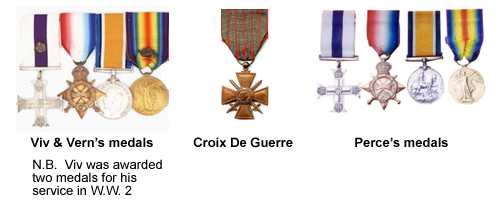
Herbert (Bert) Andrew SMYTHE (b. 1890 d. 1917) No. 1175
Before the war, he served one year in the Post and Telegraph Rifle Club and seven years and eight months in the Australian Rifles. He enlisted in ‘A’ Company 3rd Battalion, on 27 August 1914. He left for the Middle East (with the 3rd Btn.) on 20 October, 1914 on the “Euripides”. On 25 April 1915, he proceeded to the Gallipoli Peninsula, taking part in the historic landing. This action by the Australian and New Zealand forces saw the birth of the ANZAC legend.
Bert was promoted to Corporal on 7 April 1915, and wounded in action in late April, when a ricocheting Turkish bullet hit him in the right shoulder. He was evacuated to hospital in Birmingham, England. He returned to Egypt and was ‘taken on strength’ at Overseas Mustapha Base, 10 August 1915. He then embarked at Alexandria for the Gallipoli front. On 15 September 1915, he was sent to Lemnos with bronchitis and then on to Wandsworth Hospital in England, 27 October 1915.
On 25 March 1916, he was posted to 26th draft from England to join Middle East Forces and departed on a ship named "Hunterpill". Letters recently found confirm he was at 3rd Bn. Care 1st N.S.W. Training Bn. at Tel-el-Kebir. There he applied for training as a telegraphist and the next date shown on his documents is Bulford, Perham Downs in England on 6 July 1916 for Signals Training. No date of leaving Egypt or name of ship is on the documents. 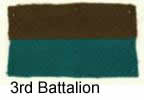 He was later promoted to Sergeant.
He was later promoted to Sergeant.
He applied in October 1916 for a recommendation for Training as an Officer. He was considered as a suitable candidate but was advised that if he returned to his battalion and did well there, he would be given consideration before others. It is sad that this never came to pass.
However, he wanted to join his three brothers, who were all fighting in the front lines in France at that time. He was finally able to proceed there as a reinforcement for the 3rd Bn. in March 1917, as a Cpl. However, his wish to join in the fighting in France had tragic consequences for him as he was killed in action in the 2nd Battle of Bullecourt on 3 May 1917.
Edward Vivian (Viv) SMYTHE (b. 1891, d. 1968) No. 60011.
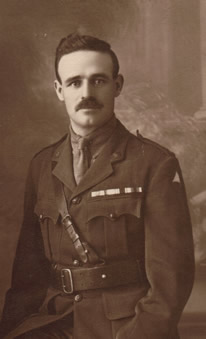
Viv served for 4 years in the Volunteer Services - 1st A1 Reg. and 17th Inf. Reg. before the outbreak of W.W. 1. He enlisted in the services on 11 May 1915 and after completion of Officer Training, he embarked for the Middle East on 2 November 1915. Like Bert and Vern, he was transported on the "Euripides" and arrived in Suez on 29 November 1915, serving in Egypt in the 17th Btn. He was later 'taken on strength' in the 24th Btn. (June 1916), serving in France and Belgium. Shortly before the war ended he was sent to England. Viv received a Military Cross at Warlencourt, a Bar to the M.C. at Broodseinde Ridge and was Mentioned in Despatches at Bullecourt. He finished the war as a Temporary Major and returned to Australia on 7 July 1919. The full details of his Army career are in a report by his son Edward (Ted) Smythe in Chapter 14, with details of his service in World War 2 in Australia and New Guinea. He was granted the Honorary Rank of Major on 6 June 1919.
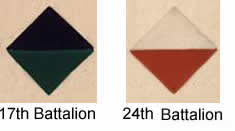
Percy Ellesmere SMYTHE (b. 1893, d.1966) No. 2461.
In the years leading up to the war, he served 2 years 2 months with 27th Inf. Reg. He enlisted on 11 May 1915, and embarked for Middle East with 7th Reinforcements, 3rd Infantry Btn. on 14 July 1915 on the "Orsova". Perce was 'taken on strength' in the 3rd Btn. at Gallipoli on 2 September 1915, but was evacuated to Malta with pneumonia on 24 September 1915. Later, he rejoined his unit at Tel-el-Kebir and proceeded to France in March 1916. In October 1916, he was transferred to the 24th Btn.
After a period of service in France, he developed severe bronchitis and was sent to hospital in Birmingham, England. After he recovered, he returned to the front and was 'taken on strength' in the Officers Cadet Battalion in England and promoted to 2nd Lieut. After rejoining the 24th Btn., he saw action at Mont St. Quentin in October 1918, where he was awarded the Military Cross. He was promoted to Full Lieutenant before the 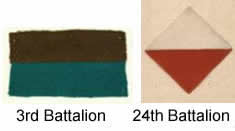 Armistice and returned to Australia on 22 August, 1919.
Armistice and returned to Australia on 22 August, 1919.
Percy kept a detailed journal of his service life spanning 1915-1919. This covered events prior to his enlistment, as well as his service abroad in Gallipoli, France and Belgium. Percy continued this documentation until his return to Australia on 13 October 1919. His daughter Betty Smythe transcribed the diaries containing this journal to computer, prior to donating them to the Australian War Memorial in Canberra. It is available online and also as a podcast for anyone who is interested.
This series of diary accounts are a valuable source of primary information (especially for those who are researching the 3rd, 24th and 56th Bns), as they give details of the battles from the perspective of a soldier who served on the front lines. Percy mentions so many of his comrades by name with details of their actions and in many cases, of how, when and where they died.
Erle Vernon (Vern) SMYTHE (b.1894, d.1982) No. 1174
Prior to the war, he served 2 years in the 43rd and 44th Infantry Battalions in N.S.W. and enlisted with Herbert (Bert) on 20 September 1914. He left Australia on the same date and on the same ship (Euripides) as his brother in the 3rd Btn. and landed at Gallipoli on 25 April 1915. He was Commissioned in the Field to the rank of 2nd Lieut. on 14 May 1915, and was later Mentioned In Despatches for the action at Lone Pine in August 1915. He later transferred to the 4th Btn. on 18 December 1915.
After the evacuation of the Gallipoli peninsula, he was transferred to the 56th Btn. on 19 February 1916, before embarkation to France. He was awarded a Military Cross at the Battle of Fromelles in July 1916 and as a result of his actions at Polygon Wood (Belgium) in 1917 he was recommended for a Distinguished Service Order. However, this was downgraded and as a result he was awarded a Bar to his M.C. Towards the end of the war, he was transferred to Brigade Headquarters and after the conclusion of fighting, he returned to Australia on 8 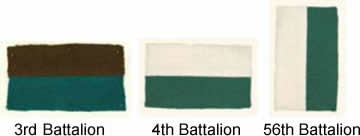 January 1919. As a veteran of the whole of the Gallipoli campaign, he was given the option of returning home early or remaining in France until he was discharged. Vern chose to return home early.
January 1919. As a veteran of the whole of the Gallipoli campaign, he was given the option of returning home early or remaining in France until he was discharged. Vern chose to return home early.
 Back row from left Bert and Viv and
Back row from left Bert and Viv and
front row from left Vern and Perce
This is a commemorative photograph taken of the Smythe boys in 1914 (according to my cousin Clyde Smythe - Viv’s son). The boys were all of enlistment age except Vern, who was only 20 years old. It was just as well that the family had this one of them together, as Bert was killed in 1917.
NEXT >>


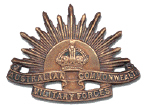


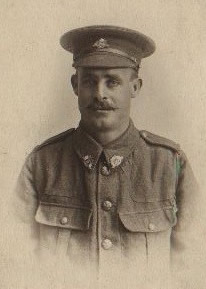
 He was later promoted to Sergeant.
He was later promoted to Sergeant.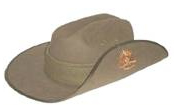


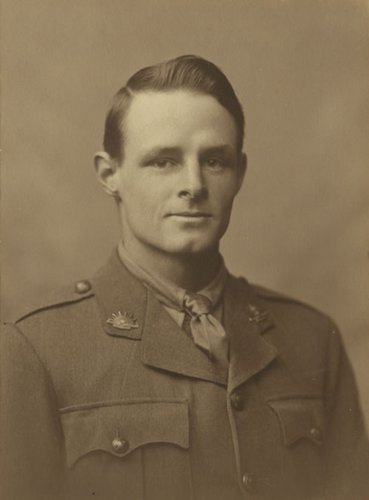
 Armistice and returned to Australia on 22 August, 1919.
Armistice and returned to Australia on 22 August, 1919. 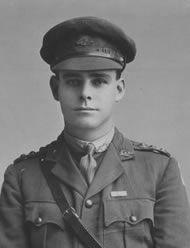
 January 1919. As a veteran of the whole of the Gallipoli campaign, he was given the option of returning home early or remaining in France until he was discharged. Vern chose to return home early.
January 1919. As a veteran of the whole of the Gallipoli campaign, he was given the option of returning home early or remaining in France until he was discharged. Vern chose to return home early. 




